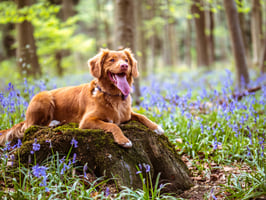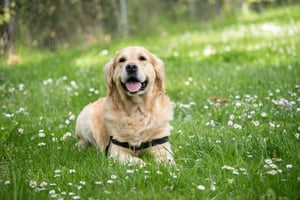Training a Great Pyrenees puppy can be a rewarding experience. With the right approach and...
The Basics of Great Pyrenees Training
Training a Great Pyrenees can be a rewarding experience for both the owner and the dog. This article will discuss the basics of Great Pyrenees training, including topics like potty training, socialisation, and obedience. The article will also provide helpful tips for owners on how to make the training process as successful as possible.
Potty Training
Potty training is one of the most important aspects of training a Great Pyrenees. The key to successful potty training is consistency. It is important to establish a routine and stick to it. Start by picking a designated potty area and taking the dog to the same spot each time. Reward the dog for going in the correct spot with treats or praise. If the dog has an accident, do not scold them. Simply clean up the mess and take the dog outside again.
If the dog is having trouble understanding where they should go to the bathroom, try using a crate. A crate can help the dog learn where they should go and can also help with housebreaking. Be sure the crate is the right size, as a Great Pyrenees needs enough room to turn around and lay down comfortably.
Socialisation
Socialisation is an important part of training a Great Pyrenees. This breed of dog is naturally protective and can become aggressive if not properly socialised. It is important to expose your dog to different people, animals, and environments in order to ensure they are comfortable in any situation. Start by introducing your dog to family and friends, and then gradually introduce them to other people and animals.
Take your dog to the dog park or on walks in different areas to help them get used to different environments. Invite people to come over to meet your dog, and don't be afraid to introduce your dog to other animals. Socialisation is essential for a well-behaved and happy Great Pyrenees.
Obedience Training
Obedience training is an important part of Great Pyrenees training. Teaching your dog basic commands like sit, stay, and come can help keep them safe and make them easier to manage. Start by teaching your dog simple commands like “sit” and “stay”. Once your dog has mastered these commands, move on to more complex commands like “down” and “heel”. Be sure to use positive reinforcement when training your dog, such as treats or praise.
It is important to be consistent when training your Great Pyrenees. This means using the same commands, using the same tone of voice, and rewarding your dog for good behaviour. If your dog does not obey a command, do not punish them. Instead, try to understand why they did not obey and try to correct the behaviour in a positive way.
Tips for Successful Great Pyrenees Training
Training a Great Pyrenees can be a rewarding experience, but there are some tips that can help ensure success. Here are some helpful tips for owners:
- Be consistent. Consistency is key to successful training. Establish a routine and stick to it. Use the same commands, tone of voice, and rewards each time.
- Be patient. Training a Great Pyrenees can take time and patience. Do not expect your dog to learn commands overnight. Take your time and reward your dog for good behaviour.
- Be positive. Positive reinforcement is the best way to train a Great Pyrenees. Use treats, praise, and affection to reward your dog for good behaviour.
- Be prepared. Make sure you have everything you need for the training session, such as treats and toys. Also, make sure the area is safe and free of distractions.
Following these tips can help make training a Great Pyrenees a successful and rewarding experience.
Conclusion
Training a Great Pyrenees can be a rewarding experience for both the owner and the dog. Potty training, socialisation, and obedience training are all important aspects of training a Great Pyrenees. It is important to be consistent, patient, positive, and prepared when training a Great Pyrenees. Following these tips can help make the training process successful and enjoyable for everyone involved.



